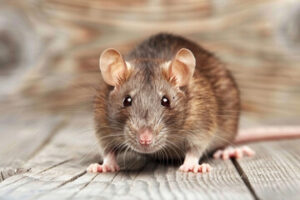Seeing mice scurrying through your home or hearing squeaks and scratching in the walls can be alarming. You might also notice gnaw marks on your pantry items and a musty rodent odor.

To prevent these unwelcome guests, make sure trash is in a tight container and keep branches, shrubbery, and other vegetation trimmed away from the house. Inside, seal holes with caulk and steel wool (mouse-resistant stuff). Let Mice Removal Texas provide the expert help you need.
Ultrasonic devices are plugged into electrical receptacle outlets and purportedly emit high-frequency sound that disturbs pests such as mice. The theory is that the noise confuses the rodents and prevents them from communicating, breeding, or gathering food. These devices are popular and can be found in many Do-It-Yourself shops and online. The appeal of these devices is that they are nonchemical and harmless to humans. However, most of the available research shows that these devices do not work as advertised.
Sonic or ultrasonic rodent repellents are small devices that emit high-frequency sounds that are supposedly intolerable to mice and rats. These frequencies are too high to be heard by human ears, but are irritating enough to cause the pests to leave the area. In addition to rodents, these devices also claim to repel insects such as cockroaches and spiders.
The mechanical vibrations generated by the ultrasonic device are transferred to a transducer, or horn, that transmits the vibrations to the surrounding medium. Since these frequencies are too high for human hearing, the acoustic energy is transmitted to the environment without loss of power intensity.
These devices are not recommended for homes with pets such as cats, dogs, or fancy rats, hamsters, or guinea pigs. The acoustic waves can irritate these pets and potentially cause long-term neurological damage. Additionally, there is little or no evidence that these devices are effective in preventing pest infestations in the first place.
Rodents are often invited into homes through holes in the exterior, damaged roofing, open vents, leaking drain pipes and cracks in the foundation. They can also gain entry by slipping underneath doors or through unscreened chimneys. It is important to seal any gaps in the exterior of the home, especially those larger than 1/4 inch. In addition, keeping firewood and other potential rodent hiding places away from the house will help to eliminate their attraction. Inside the house, door sweeps should be installed to limit the ability of rodents to slip under doors, and glueboards or traps should be used at the earliest signs of pest activity.
Essential Oils
Peppermint oil is a popular choice for natural mice repellents. Bloggers and natural living proponents recommend soaking cotton balls in peppermint oil and strategically positioning them throughout the house. The scent confuses and repels mice, keeping them away from the home. However, using this method alone is not sufficient to eliminate a full-blown infestation. If you notice signs of a rodent problem, follow a multi-step pest control plan and contact wildlife removal professionals for help.
Essential oils are generally safe for use in the home when properly diluted and used as directed. However, they may be toxic to pets and children if swallowed or inhaled in high concentrations. Always dilute essential oils before applying to your skin or around your home and keep away from children and animals.
The oils in certain plants have powerful antimicrobial properties that can prevent infections and disease. Many are also known for their stress-reducing properties, improving sleep quality and easing anxiety. These benefits make them a healthy alternative to chemical pesticides. Essential oils also break down more quickly, reducing their impact on soil and water. This minimizes their effects on non-target organisms and supports a more balanced ecosystem.
There are several types of essential oils that are effective at deterring mice and other pests. Some are better suited to specific conditions than others, but all are effective in general when applied correctly. Cloves, for example, have a strong smell that mice dislike and can be used whole or in oil form. They can be sprayed directly on areas where mouse activity has been reported. Cinnamon and eucalyptus are other essential oil options that repel mice.
You can also use essential oil diffusers to disperse the aroma in your home. Creating a customized blend allows you to personalize the scent and increase effectiveness. Some of the best combinations include peppermint, cinnamon, clove, and eucalyptus. These methods are more cost-effective than purchasing commercial pesticides and have the added benefit of improving your overall health and well-being. While they can be effective in repelling mice, it is important to remember that they will not stop a full-blown infestation from relocating to other parts of the property.
Ammonia
Ammonia is a compound made of one part nitrogen (N) and three parts hydrogen (H). It is produced by both humans and nature, with almost equal amounts being manufactured by each. It is a colorless gas and has a pungent smell that can be overpowering to some people. It is highly toxic when inhaled in large quantities and can cause lung damage, eye irritation, or if it comes into contact with the skin. Exposure to high concentrations can also result in nausea and vomiting.
Mice are attracted to many different things, including food and water, but some of the most common causes of infestation are a lack of sanitation, overcrowded living spaces, and open garbage cans. Regularly sweeping floors and wiping down countertops, tables, and other surfaces can help eliminate food residue that may attract mice. Also, storing garbage in tightly sealed containers can reduce the amount of food and other debris that is available for mice to scavenge.
In addition to keeping areas clean and removing food sources, rodents can be deterred by using scents they cannot tolerate. One of the strongest scents that mice can’t stand is ammonia, which reeks of predator urine to them and makes them run away quickly. This is a simple way to repel mice and make them leave your home on their own.
Other scents that repel rats and mice include peppermint oil, eucalyptus oil, and castor oil. These oils can be used as sprays or placed in scented cotton balls around trouble areas to keep them away from your home. When spraying, reapply every week or as needed and replace the cotton balls after two weeks.
If you are having problems with a mouse infestation, it is best to call a pest control professional to deal with the problem immediately. A licensed pest control technician will be able to inspect your home and seal any possible entry points. They will also set traps and baits to catch the mice, ensuring that they are all removed from your property. They can also return for follow-up visits to ensure that the problem has been completely eradicated.
Traps
Mice are one of the most persistent household pests. Their droppings contaminate food, and their chewing can damage wires. They can also cause health issues for humans and pets by introducing germs into homes. Fortunately, there are ways to control mice infestations and prevent future ones from happening. The first step is rodent-proofing the home by removing any sources of food or shelter for mice, such as stacks of wood or cardboard. It’s important to take precautions outdoors, as well; move compost bins away from the house and keep bird feeders and grills clean.
Mouse traps come in a variety of designs and sizes, but all work to lure the rodent into a trigger mechanism that’ll ultimately kill it. Early cage traps, chokers and dead-falls were often cruel and inhumane, but modern methods for catching mice are far more humane. Some traps require no handling of the animal and can be disposed of with ease, making them ideal for use around children and pets.
Snap traps are among the most common and effective traps. They’re simple to set and easy to use, and can catch multiple mice at once. However, they can be dangerous to pets and children if they’re not placed out of reach. Ensure that there’s no access to the trigger and that the bait cup is sealed tightly after setting each trap.
For a more humane approach, try live capture traps like the TIN CAT. These traps are designed to humanely catch and release mice, and have a transparent plastic cover that lets you see whether the trap is full without opening it. They’re easy to set, reusable and can be used in areas where snap traps are not appropriate.
The TIN CAT trap has a built-in bait cup that makes it simple to lure mice in, and is equipped with a safety feature so the mice can be released easily without being harmed. It’s powered by AA batteries and can kill multiple mice on a single battery charge, while the green LED light alerts you that it has caught a mouse.

